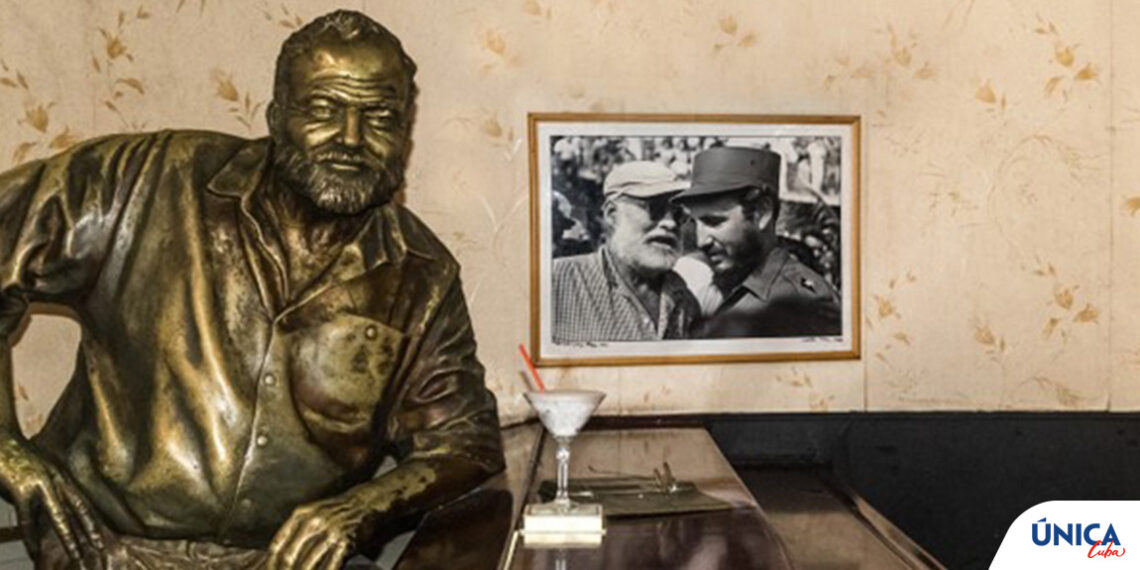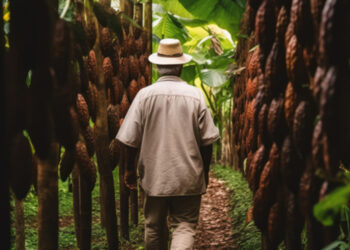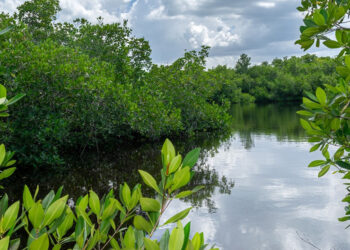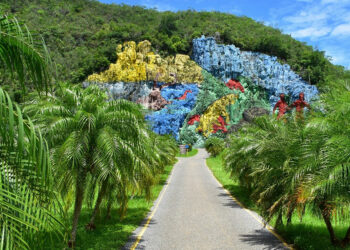How do you fancy taking a journey through Cuba and tracing the footsteps of one of the greatest literary figures of the 20th century, Ernest Hemingway? Of course you do, that’s why you’ve landed here. Known for his profound works and adventurous life, Hemingway found a deep connection and source of inspiration in the bustling culture and scenic beauty of Cuba – and we’re here to share it with you.
From the lively streets of Havana to the tranquil fishing village of Cojímar, we’ll uncover the essence of Hemingway’s Cuba, a landscape that profoundly impacted his writing and left a lasting legacy on the island. Join us as we walk in the footsteps of the American novelist, discovering the places he loved, the culture he embraced, and the legacy he left behind in this captivating Caribbean nation.
Hemingway’s Havana: A Historic Overview
Ernest Hemingway’s love affair with Cuba began in the 1930s, marking the start of a profound relationship that lasted over two decades. Havana, with its pulsating energy and rich culture, became his second home and a significant source of inspiration.
Hemingway was captivated by the city’s lively atmosphere, from the cobblestone streets of Old Havana to the bustling cafes and bars. Here, he mingled with locals, embracing the Cuban lifestyle and its infectious spirit. This deep connection with Havana not only enriched his life but also significantly influenced his literary works, embedding Cuban culture into the fabric of his storytelling.
Exploring Hemingway’s Haunts
Hemingway’s presence still lingers in Havana, particularly in the spots he frequented, which have now become iconic landmarks for literary enthusiasts.
- El Floridita: Known as Hemingway’s favourite bar for daiquiris, El Floridita remains a popular spot with locals and tourists alike. It’s famed for its signature cocktail and the life-size bronze statue of Hemingway, a tribute to the legendary patron.
- La Bodeguita del Medio: This bustling bar, famous for its mojitos, was another favourite of Hemingway. It’s known for its lively ambience and walls adorned with signatures and memorabilia.
- Hotel Ambos Mundos: Hemingway spent significant time in Room 511 at this hotel, where he began writing “For Whom the Bell Tolls.” The room is preserved as a mini-museum, displaying his typewriter and personal belongings, offering a glimpse into his life during those years.
These locations provide a tangible connection to Hemingway’s world, inviting visitors to experience a piece of the literary history that Havana so proudly preserves.
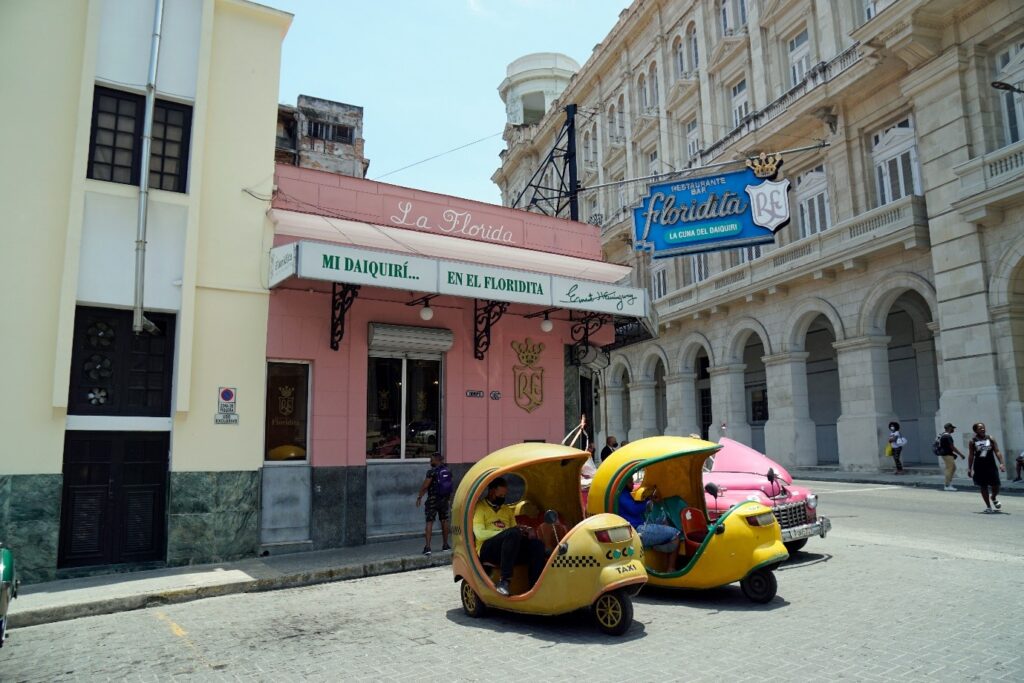
Visiting Finca Vigía: Hemingway’s Cuban Home
Finca Vigía, located just outside of Havana, was Hemingway’s residence in Cuba and is a must-visit for anyone following his trail. This well-preserved estate offers a glimpse into his daily life. The home, virtually untouched since he lived there, houses his extensive book collection, hunting trophies, and the famous fishing boat, Pilar. The lush gardens and his writing studio provide insights into where Hemingway found solace and inspiration for some of his most famous works.

Hemingway’s Fishing Legacy: Cojímar and Beyond
Cojímar, the quaint fishing village that inspired “The Old Man and the Sea,” is a testament to Hemingway’s passion for fishing and his deep connection with the local fishermen. The village’s simplicity and natural beauty encapsulate the essence of Hemingway’s love for Cuba. Visitors can explore the waters where Hemingway fished and see the monument dedicated to him, built from the propellers donated by local fishermen. This area is a symbol of Hemingway’s enduring bond with Cuba and its people.

Literary Pilgrimage: Following Hemingway’s Footsteps
For those looking to delve deeper into Hemingway’s Cuban journey, a self-guided or organised literary tour is ideal. Such tours typically include visits to his favourite bars, his home at Finca Vigía, and the fishing village of Cojímar. They offer a chance to experience Havana as Hemingway did, absorbing the culture and atmosphere that influenced his works. This literary pilgrimage is a great way to connect with the spirit of one of the greatest writers and the city he so dearly loved.
Hemingway’s Influence on Cuban Literature and Society
Ernest Hemingway’s impact on Cuban literature and society extends beyond his own works. He influenced a generation of Cuban writers and artists, who found inspiration in his lifestyle and storytelling techniques. Hemingway’s immersion in Cuban culture and his depiction of its landscapes and people in his writing helped bridge cultural gaps and brought global attention to Cuban art and literature. His legacy in Cuba is a fusion of literary brilliance and cultural integration, illustrating the profound impact an artist can have on a society.
Exploring Hemingway’s Cuba is not just a journey through picturesque locales; it’s a voyage into the heart of a literary giant’s inspiration. This exploration reveals how deeply Hemingway was intertwined with Cuban culture and how his legacy continues to resonate. Walking in his footsteps allows us to experience the enduring charm of Cuba, a place that captivated Hemingway’s heart and creativity. His story in Cuba is a reminder of how a land can profoundly influence an artist and vice versa.
Inspired to experience Hemingway’s Cuba for yourself? Discover the places that shaped his work and his life by planning your trip with us. For more information on tours and travel tips, visit Love Cuba. Book your Cuban adventure today and walk in the footsteps of Ernest Hemingway.
Love Cuba is the UK’s leading Cuba holiday specialist. Click here for more info on Cuba holidays, Multi Centre Cuba Holidays or Tailor Made Cuba Holidays and please don’t hesitate to contact our friendly team of Cuba holiday specialists on 0207 071 3636 or email enquiries@lovecuba.com.





